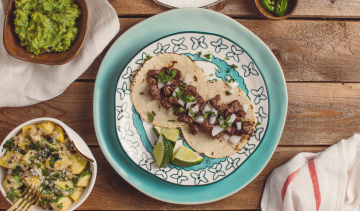Keeping track of what you eat during the day (in an app) is becoming increasingly popular. That is not surprising because this information provides us valuable insights. In this way you get better insight into what you eat in a day and how much protein, fats, carbohydrates and calories you have already eaten. Tracking your diet can also turn into an obsession though. How can we still have a healthy relationship with food nowadays if we also have to think about nutrient values? The answer: intuitive eating.
Intuitive eating
Intuitive eating is based on hunger and satisfaction. This means that you eat when your body asks for it. You do not exclude food products, as is the case with a rigid eating regimen. With intuitive eating you are also not concerned about counting calories or counting your macronutrients (proteins, fats and carbohydrates).
Recent research by The Ohio State University has shown that intuitive eating is linked to having a stable weight. Rigid eating (eating with limitations) is linked to having a yoyo weight. Another study by The Ohio State University shows that intuitive eating leads to fewer psychological problems, a higher adaptability and a lower BMI compared to controlled eating.
How do you eat intuitively?
Feeling and knowing when you are hungry may sound easy, but that is for most people not the case. Let’s be honest, how tempting is it to take a piece of cake when there is something to celebrate at the office (for the 10th time in a month), even when you are not hungry … Learning to eat based on hunger and satisfaction takes time. The following tips can help you with this.
- Only eat if you want to eat
Try to eat when you are hungry and not when you ‘should’ eat. For example when you are not feeling hungry around lunchtime, don’t run to the kitchen to have lunch like all your colleagues. - Eat consciously
Food is friend, so take your time. Focus on what you eat, drink water in between and take the time to chew on your food. This is how you enjoy your food. - Ask yourself why you are eating something
Before you eat anything, briefly ask yourself “why am I going to eat this.” In this way you are thinking about your motivation. Are you hungry? Then eat something nutritious, so you are no longer hungry. Do you fancy something tasty? Something sweet? Then eat and enjoy something you’d like. Especially try to eat when your body indicates it needs food. After all, that is what food is for. Fuel for your body. - Listen to your body
Listening to your body can be tricky, because your body does not say “hello brain, I am now craving a juicy steak because your body has iron deficiency and that steak enables us to fill our iron supply“. You can pick up signals though such as low energy, a rumbling stomach or dizziness. Take the time to get to know your body and recognize the corresponding signals.
Enjoy your food
Eating intuitively is of course not a free pass to eat everything because you ‘need’ it. In principle you are allowed to eat everything with intuitive eating and certainly do not have to exclude products which is the case with rigid eating regimen. Eating intuitively is about enjoying and taking good care of yourself and your body.
Disclaimer: if you have trouble eating or have an eating disorder, make sure you eat enough even though you are not feeling hungry.










